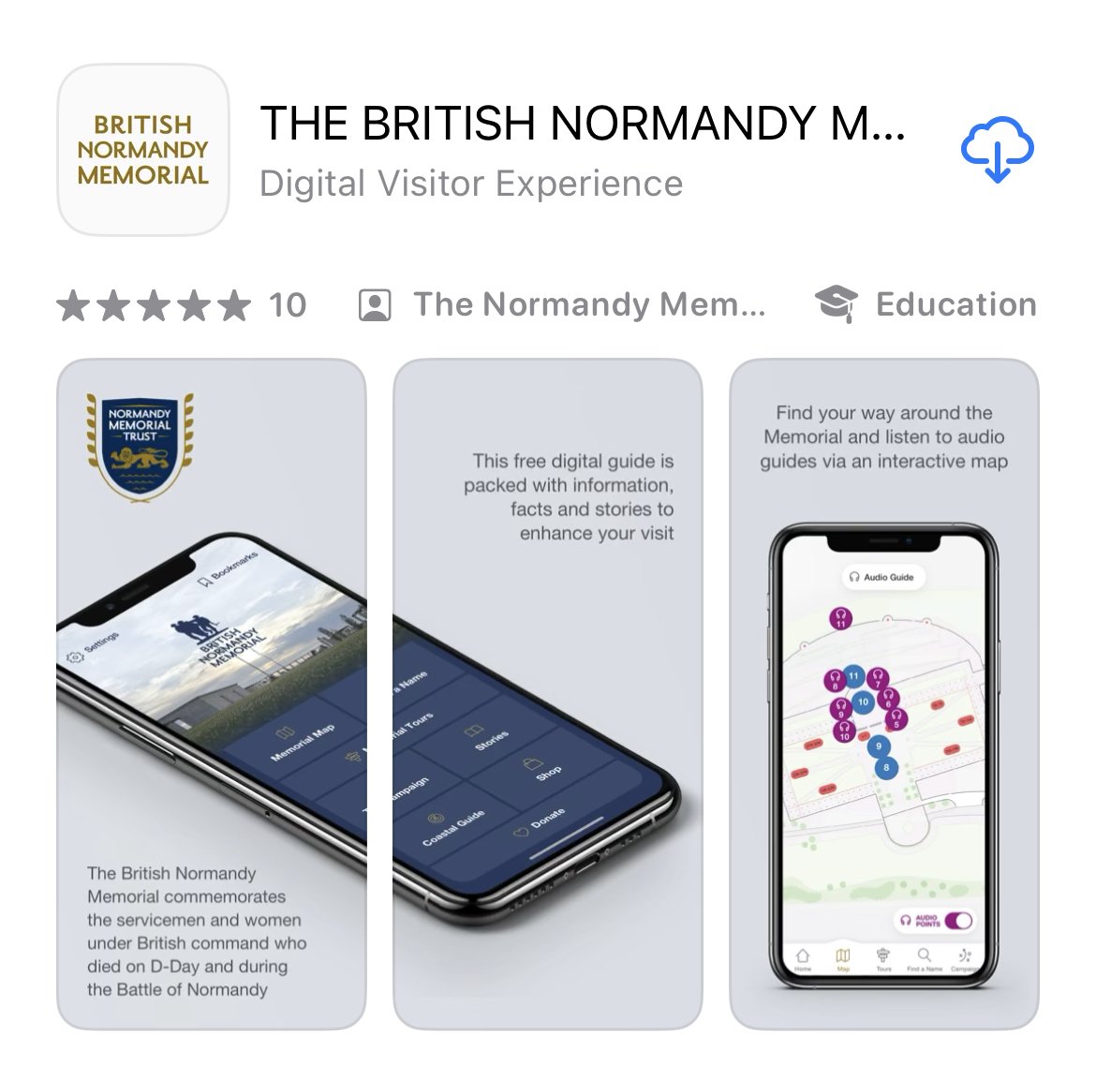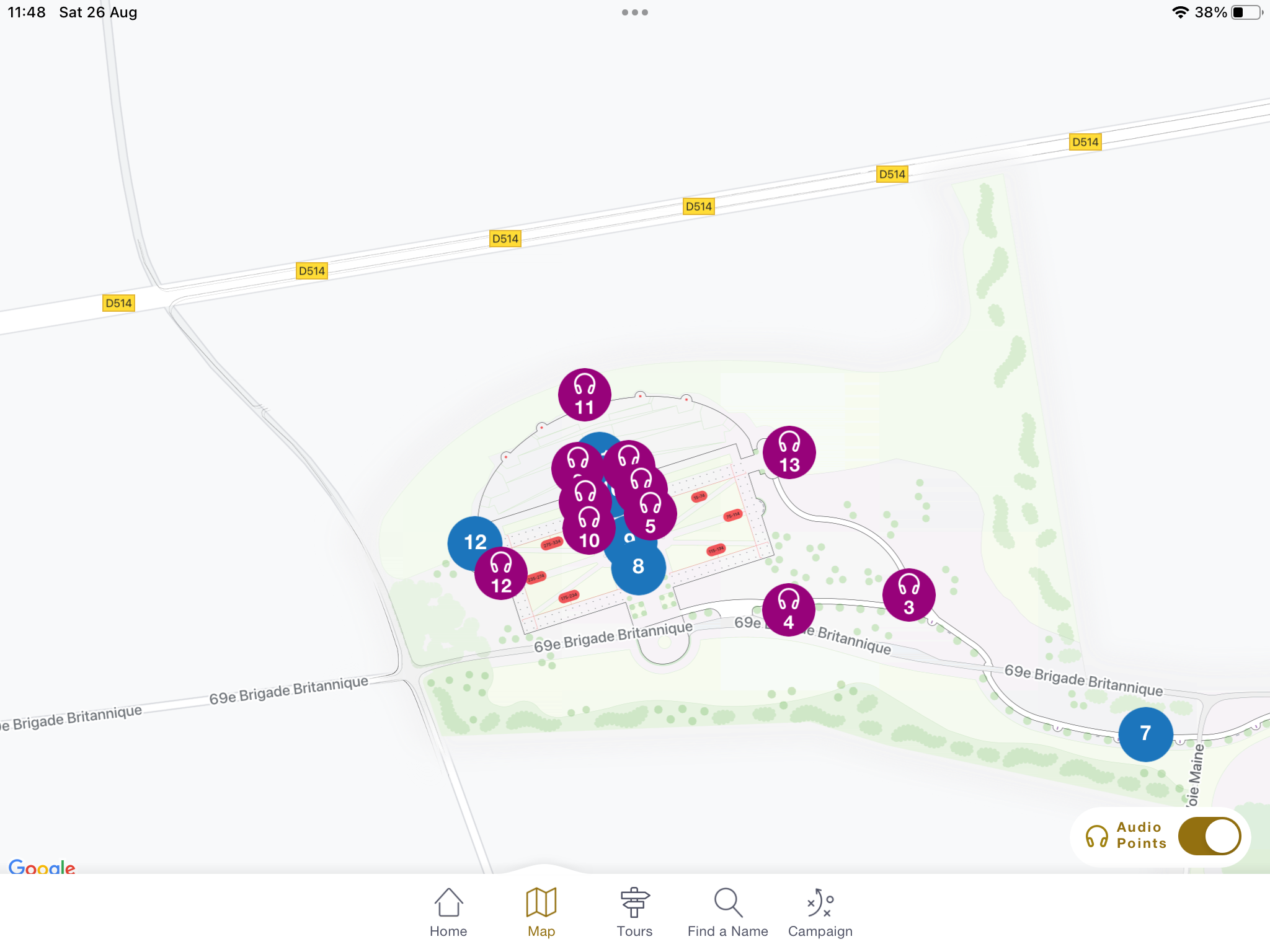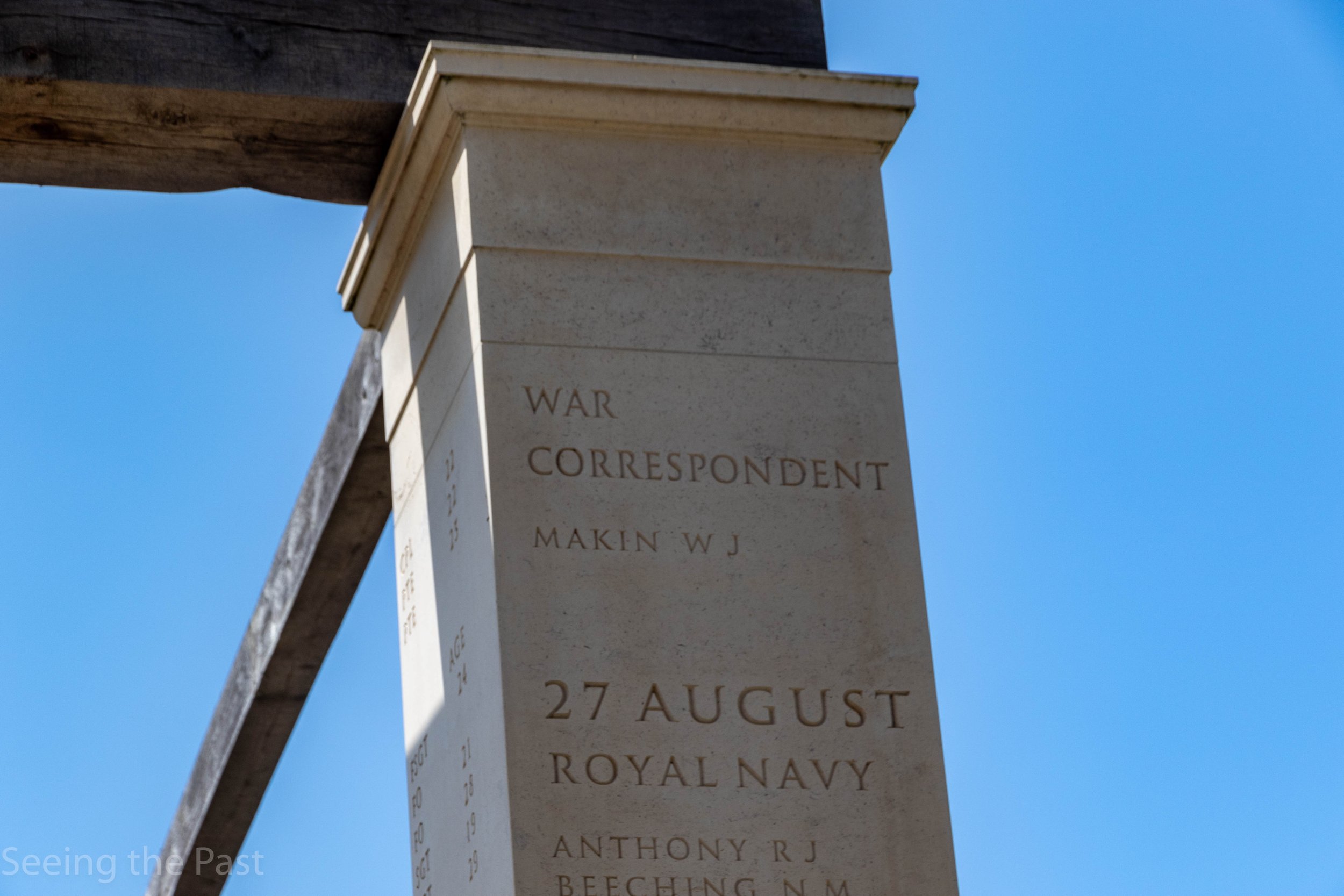D Day series;"Walking Among Heroes: Visiting the British Normandy Memorial"
/What is there to see at the British Normandy Memorial?
On 6th June 2021, the memorial was opened and visitors could read the names of 22,442 servicemen and women under British command who died on D Day, and the succeeding weeks it took to break out of Normandy. It also includes service men and women of 30 other nationalities who were serving in British units. The names of those who died are listed in chronological order, placing each name with the names of others who died on the same day. The lists were closed on the last day of the campaign, August 31st 1944, but it did include those who later died from wounds suffered during the campaign. It is a place of reflection and thankfulness.
It all began in 2015, when a D Day veteran, George Batts, pointed out to Nicholas Witchell of the BBC, that all the major allied nations had their own memorials in Normandy with lists of to those who died in the Normandy campaign, except Britain. Six years later it was opened by HRH Prince Charles, now King Charles III.
The memorial is well signposted and there is a large car park with toilets. A small parking fee has to be paid which contributes to the upkeep of this rather large and tranquil place of remembrance.
Below; there is a free App that you can get from Iphone’s App store or Google Play, that will provide you with audio tours around the memorial, a map and loads of stories to support many of the names that you will discover. The App will also help you discover the location of a particular name if you know of someone who died in the Normandy Campaign.
Below; is the map on the app and points where audio commentary can be heard on the app.
Below; another aspect of the app are a range of specific tours and the amount of associated information and stories.
Below; with or without the app, the first thing you come across, are large information stones.
Below; a close up of the first information stone.
Below; getting closer. As you near the memorial, you begin to appreciate the size of it.
Below; the first colonnade from the side.
Below; when you get to the end of the colonnade, you turn to the right and now you can see the heart of the memorial.
Above and below; the scenes as you get closer.
Above and below; to the left and right are colonnades with numerous names carved on each column.
Some interesting stories that we researched
Below; wandering along looking at the names, an SOE officer’s name attracted our attention. SOE stood for Special Operations Executive which meant that A Beauregard was a secret agent operating behind enemy lines. The organisation was created in 1940 and was committed to wage a secret war against the Nazis, in France, as well as working with the French Resistance. We have researched A Beauregard and discovered there was only one agent with this name and so this, in the next paragraph, is probably, his story.
Alcide Beauregard was born in Canada, the second of ten children in a family of French descent. He joined the war effort in Canada and was soon moved to the Canadian Corps of Signals. In mid 1943, the SOE was looking for French speaking operatives and Alcide fitted their requirements, being fluent in both French and English as well as being trained in radio communications.
On the 8-9th February, he was secretly flown in a Lysander to Azay-Sur-Cher and then made his way to Lyon. He then set about encoding and decoding important messages in utmost secrecy out of a schoolteacher’s house for a Resistance network or “circuit”, called “Ditcher”. Nearly 50 circuits existed, prior to the liberation of France, working alongside approximately 470 SOE agents. As D Day got closer, the volume of messages handled by Alcide was huge and he began to find it difficult to keep changing his messaging location. Unfortunately, he stayed in one place too long allowing the Germans to locate him. He was taken prisoner, however, he did find time to destroy his radio and his secret codes. Under arrest, he was brutally tortured and interrogated by the Gestapo but despite all of this, it is recorded that he revealed nothing. He was kept in Montluc prison until the 20th August, when, he was moved to Fort de Cote-Lorette, where he was executed. Apparently, he was one of 120 prisoners who were taken to a guardhouse where they were all machine-gunned to death. To destroy any evidence, the Germans then set alight the building with petrol and then used explosives to finish the job!
Above; I believe this is Captain Thomas Anthony (Tony) Mellows who was part of the SOE “Jedburgh” unit and was in a three man team called Martin” that parachuted into occupied France. The aim of the 70 men who were dropped was to support and train the French Resistance.
Above; two brave Frenchmen, Pierre Binet aka Gaudin /Lucien and Etienne Ancergues aka Asnier. They were part of the “Sussex” operation made up of 120 French volunteers who were dropped into France to provide valuable information for the Allies before and after D Day. Such information included the whereabouts of Panzer divisions, the location of German supply depots and launchpads for the V1 and V2s. Both men were shot by the Germans on the 19th August 1944.
Above; war is dangerous for everyone near the battlefield and in this case a journalist, W J Makin, along with two other correspondents and a French guide. All three were in a jeep when it was ambushed by a German tank near the village of Beaumont-les-Autels. It was in countryside known as “bocage” which describes an area of mixed woodland, thick hedges and pastureland, an environment where German tanks and troops could be invisible until they fired. The brief account we read ended with the words, “a brief spatter of gunfire and it was all over.”
Click here to find out about, Dorothy Anyta Field, one of only two women to be on the list.
Click here to find out about Pilot Officer Sayana Puram Duraiswamy Thyagarajan
Click here to find out about Josef Stravinsky.
Click here to access the stories of hundreds of others commemorated on this memorial. (It may take a little while to load)
The amazing Harry Billinge, who became a popular fundraiser, through numerous TV appearances.
In his last few years of life, Harry was the image of a D Day hero who wanted to build a monument in Normandy to those who died. The Veterans’ Foundation website states, “His dream of building the memorial captured the nation's hearts and the project was closely followed by major media outlets bringing his personal story into millions of homes.” On 6th June 2021 his dream was realised and the memorial to all of his former comrades was opened. For his work, Harry was awarded the MBE from Queen Elizabeth II and also France's highest award, the Legion d'Honneur. The website adds, “Harry from St Austell, Cornwall, was just 18 when he landed on Gold Beach on June 6, 1944. He was a sapper attached to the 44 Royal Engineer Commandos and was one of only four of his unit to survive the storming of Gold”. (beach)
"It was hell on earth. Murder. The sea was red with blood, human blood," he recalled. Despite all that he went through, Harry always insisted, “I ain’t no hero, it was them who were the heroes”, (referring to his dead colleagues).
Essential Information.
By car
The memorial website states; the British Normandy Memorial is located just off the D514 in the commune of Ver-sur-Mer, Calvados. It is about 25 minutes from the outskirts of Caen or Bayeux. If you are using a Sat Nav please use the address: 13 Avenue Paul Poret, Ver-sur-Mer, 14114. Vehicular access to the Memorial is from either Courseulles (to the East) or Arromanches (to the West) and along the D514 coast road in order to avoid approaching Ver-sur-Mer from the South.
The local roads are narrow and winding and, in some places, impassable for larger vehicles (coaches, camper vans or cars towing trailers). Therefore, please follow the local tourism signs as you get close to the Memorial rather than your Sat Nav. The Memorial is accessible to cyclists by using the cycle path and there are cycle hoops to lock your bike to as cycles are not permitted within the Memorial itself.
Parking
There were plenty of parking spaces when we visited at the end of May. There is a fee of €3.50 for parking and tickets are valid all day. The fee is payable at parking machines on site and all funds raised go directly towards the ongoing maintenance of the Memorial. You also can download the highly informative app for free, use the free Wi-Fi hotspot at the entrance and enjoy the memorial environment is both beautiful and peaceful. Note there are toilets in the car park.
By Rail
The Memorial is situated approximately halfway between Caen and Bayeux rail stations, both served by local trains and regional services from Paris. Car hire is available at the train station in Caen. Bus services run from both Caen and Bayeux rail stations to Ver-sur-Mer.
By Bus
The number 3 bus runs from Caen Bus Station to Courseulles-sur-Mer, stopping outside the Memorial Entrance in Ver-sur-Mer. The number 74 bus runs from Bayeux to Ouistreham, also stopping outside the Memorial Entrance in Ver-sur-Mer. Please check the local bus timetables to help you plan your journey before visiting.
Please note: bus services do not stop in Ver-sur-Mer on Sundays.
By Taxi
Taxi services are available from Caen and Bayeux.
By Air
The closest airport is Caen Carpiquet, approximately a 30-minute drive from the British Normandy Memorial. Car hire is available at the airport.
Opening times.
The Memorial is accessible all year round. The toilets are closed on Christmas Day, Boxing Day and New Year’s Day. Toilet opening times depend on the season and are publicised at the Memorial.






























A day’s wandering around this area of Coventry will present you with hundreds of years of history to discover. You will be able to visit the ruins of the 14th and 15th century church of St Michael that became a cathedral in 1918 as well as the new one next door.. About 160 metres away or a two minute walk, is Holy Trinity church with its amazing Medieval “Doom Painting” which some people believe is the best one in Britain. One minute away, is the wonderful and free Herbert Art Gallery and Museum.